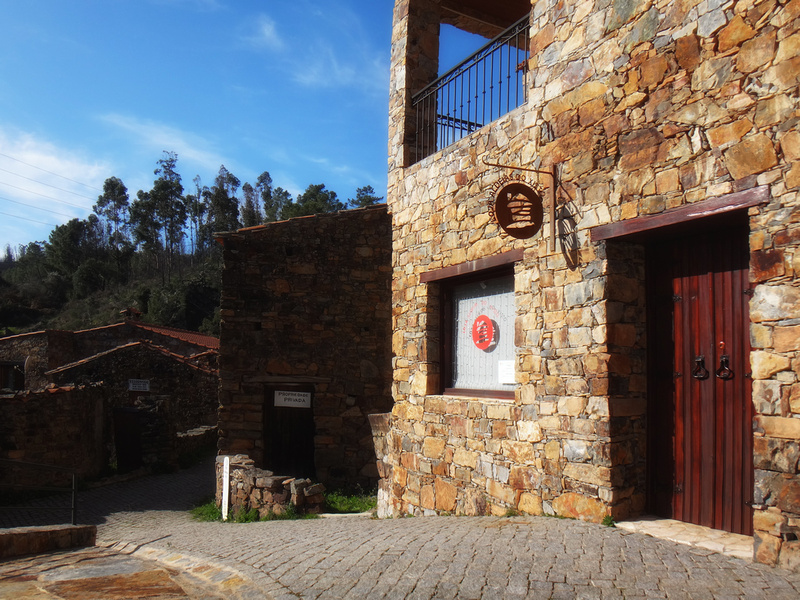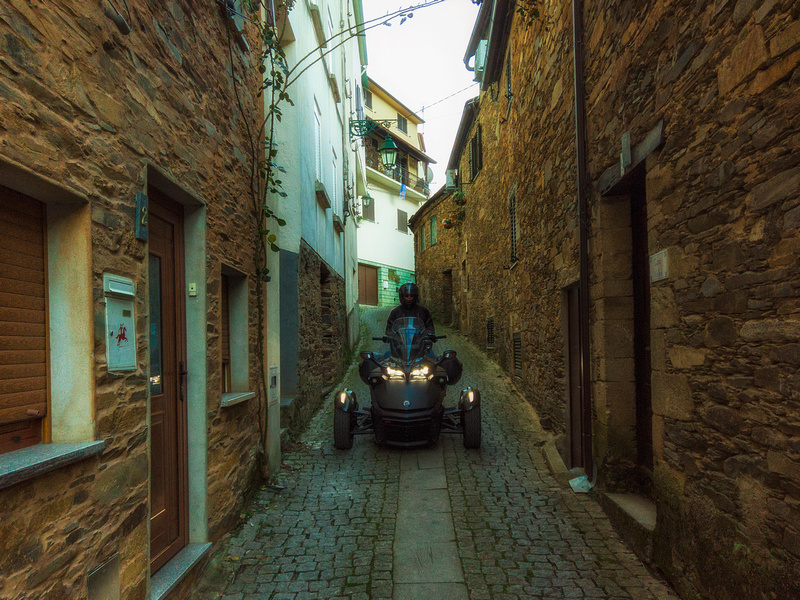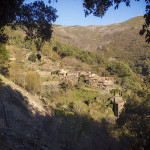Apresentação
Situated in the centre of the country, these 27 villages are dispersed over 16 counties between Castelo Branco and Coimbra.

Once a forgotten, poor and isolated region, the early 2000s saw the beginning of a rural development program (possible through European funds) to revitalize the region villages, river beaches and walking trails.
The Schist Villages are divided into four large groups according to their geographical location.
Most of the villages have a typical mountain settlement layout with houses aggregated by the hillside, protected from prevailing winds. The construction materials used are those that the mountain provides, namely wood, quartzite and shale. The walls are strongly insulated and have two layers with the exterior receiving larger stones and the interior made of smaller stones. The slate roofs usually reach four degrees of inclination, and have one or two floors high.

Shale (or slate) is characterized by being an extremely laminated rock. It is formed by the metamorphosis of clay (through the action of pressure and temperature), becoming slate and then shale.
Note that the designation is: "Aldeias DO Xisto" and not "DE Xisto" ... Although most buildings are built with shale, some are the exception and others have been plastered with cement over the years. The origin of the name comes from the predominance of shale in the region and not from the typology of the villages.
As will not be easy to incorporate 27 locations into a route thus the itinerary offered here proposes a balanced selection for a format of one to four days.
In addition, there are other villages of great interest that are not part of the network and that are also included in the itinerary.
In the format of one day, one of two options is suggested:
Serra da Lousã Group:
Casal Novo Talasnal Candal Cerdeira Comareira Aigra Nova Pena.
Serra do Açor Group:
Benfeita Vila Cova de Alva Avô Aldeia das Dez Piódão Sobral de São Miguel.
The two-day itinerary will allow you to visit the two groups above, first group day one, second group the following day.

For a stay of three to four days in the region it will be possible to extend the selection as follows:
Serra da Lousã Group:
Casal de São Simão Talasnal Casal Novo Cerdeira Candal Comareira Aigra Nova Pena.
Serra do Açor Group:
Coja Benfeita Vila Cova de Alva Avô Aldeia das Dez Piódão Sobral de São Miguel.
Zêzere Group:
Fajão Ponte de Fajão Janeiro de Baixo Janeiro de Cima.
Tejo/Ocreza Group:
Água Formosa.
It is recommended to use the route provided on the itinerary page that includes other points of interest along the way, as well as additional ones that ensure the path by paved road.
Most of the route has roads with a good surface and properly marked, however access to some villages is sometimes done on roads in poor condition, narrower and not with the same safety conditions (without crash barriers) therefore some caution is advisable and required.
There are several connections between the villages by unpaved roads that should be avoided (or not, depending on the vehicle driven).

The region has numerous water courses but also an extreme climate (very cold in winter and very hot in summer) so it is recommended to visit during the early spring, when the streams and rivers are full and the lush vegetation surrounds us.
In summer it is also possible to make the route in a shorter format prioritizing visits to the various river beaches that exist






Leave a message